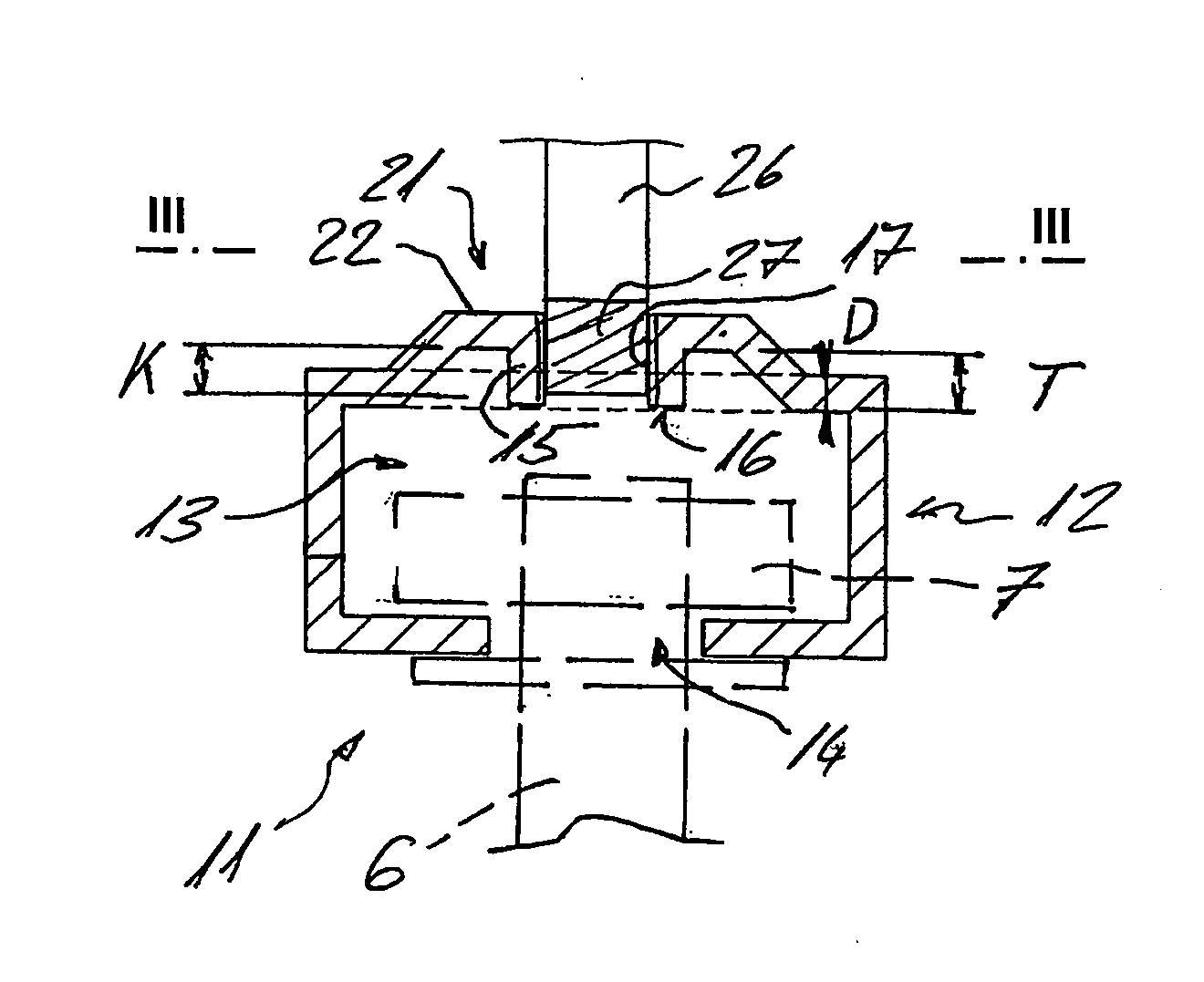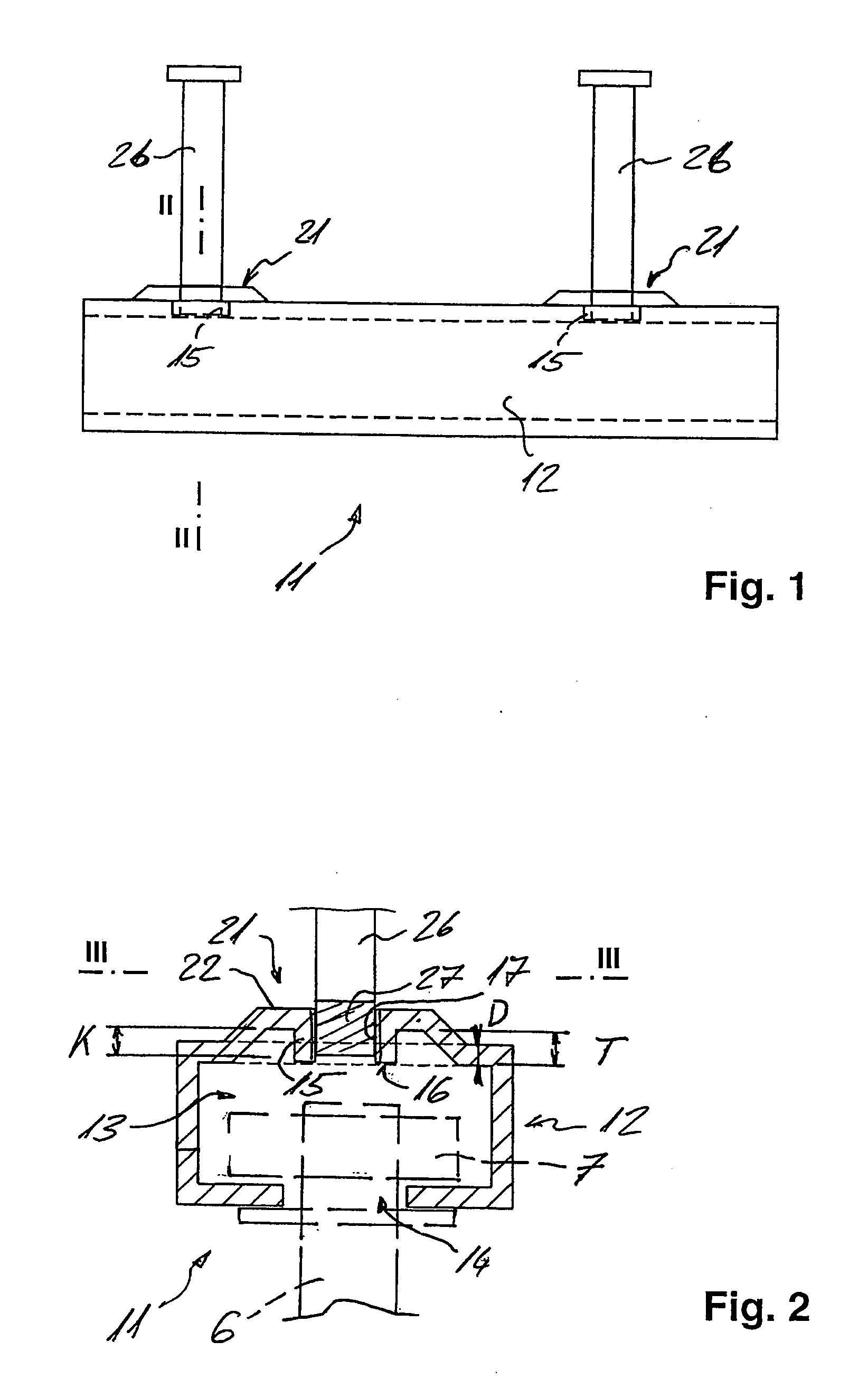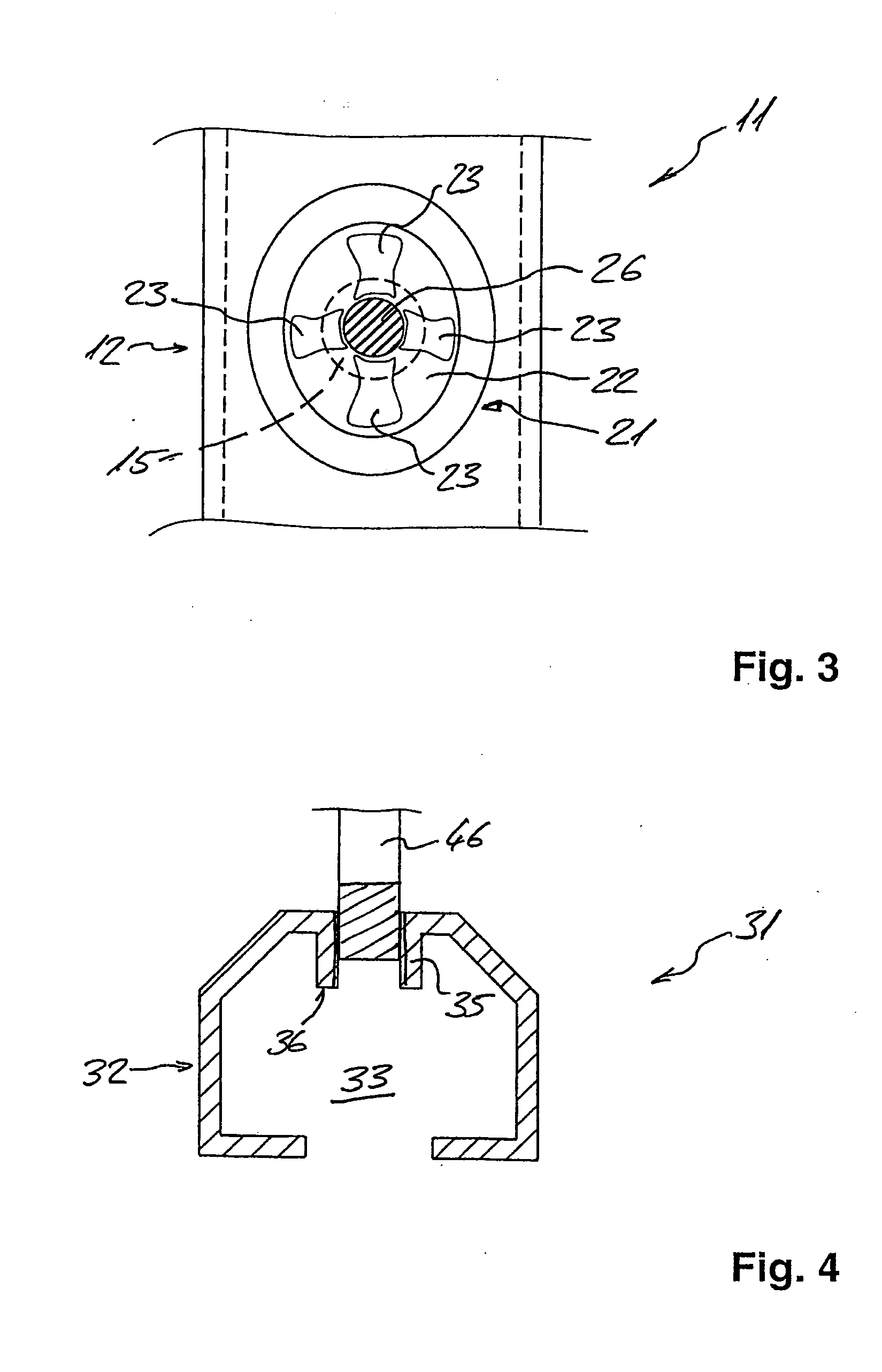Cast-in channel
a technology of casting channel and anchoring member, which is applied in the direction of structural elements, forms/shuttering/falseworks, and auxilary members of forms/shuttering/falseworks, etc., can solve the problems of screwing in the anchoring member over its entire length, requiring insertion and screwing, etc., and achieves advantageous load-carrying characteristics and reduce mounting space
- Summary
- Abstract
- Description
- Claims
- Application Information
AI Technical Summary
Benefits of technology
Problems solved by technology
Method used
Image
Examples
Embodiment Construction
[0023]In all of the figures, like parts have been given like reference numerals.
[0024]The cast-in channel 11 illustrated in FIGS. 1 through 3 has a channel body 12 and anchoring members 26 fixedly attached thereto. Channel body 12 forms a receiving space 13 for receiving a connecting element 7 used to fixedly attach a fastening element 6 to cast-in channel 11, receiving space 13 being accessible from the outside via a mounting opening 14 extending along the length dimension of channel body 12.
[0025]Channel body 12 is provided with two depressions 21 which face outwardly with respect to the receiving space 13 and which each have a bottom portion 22. Each bottom portion 22 is provided with a rim hole 15 having an internal thread 17 to allow attachment of anchoring members 26, the free end 16 of said rim hole pointing toward receiving space 13. Bottom portion 22 of depression 21 is non-concentric in cross section with respect to the rim hole 15 located therein. In addition, bottom port...
PUM
 Login to View More
Login to View More Abstract
Description
Claims
Application Information
 Login to View More
Login to View More - R&D
- Intellectual Property
- Life Sciences
- Materials
- Tech Scout
- Unparalleled Data Quality
- Higher Quality Content
- 60% Fewer Hallucinations
Browse by: Latest US Patents, China's latest patents, Technical Efficacy Thesaurus, Application Domain, Technology Topic, Popular Technical Reports.
© 2025 PatSnap. All rights reserved.Legal|Privacy policy|Modern Slavery Act Transparency Statement|Sitemap|About US| Contact US: help@patsnap.com



